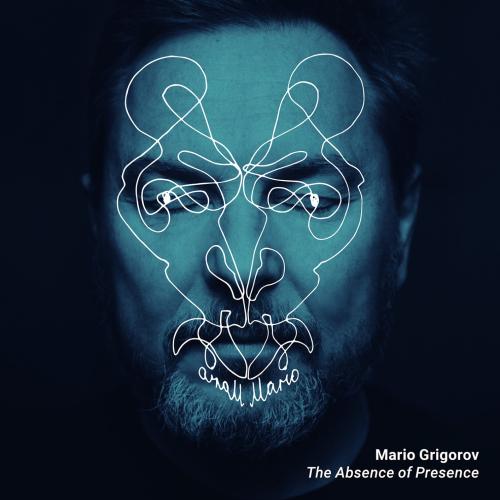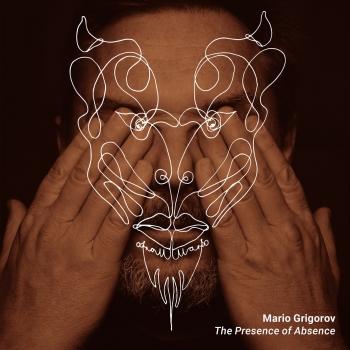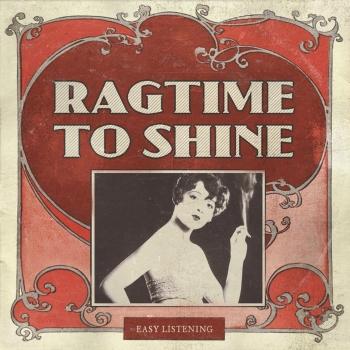
Absence of Presence Mario Grigorov
Album Info
Album Veröffentlichung:
2019
HRA-Veröffentlichung:
16.10.2019
Label: Mario Grigorov
Genre: Instrumental
Subgenre: Piano
Interpret: Mario Grigorov
Komponist: Mario Grigorov
Das Album enthält Albumcover
- 1 One Big Picnic 03:34
- 2 Soul Mirror 03:27
- 3 We Too 04:29
- 4 Just Like Nature 03:51
- 5 The City Without You 03:39
- 6 The Absence of Presence 04:38
- 7 Emergence 03:01
- 8 Back in New York 04:33
- 9 Ideal Life 04:57
Info zu Absence of Presence
Mario Grigorov has released a new solo piano album – The Absence of Presence.
The album is a collection of 9 solo piano pieces, composed in an intimate style that blends classical forms with spontaneous improvisations. The compositions explore joy and beauty through improvised melodic and harmonic patterns within neo-classical forms.
Mario Grigorov, piano
Mario Grigorov
is a Bulgarian-born film and television composer and concert pianist. A musical prodigy from the age of five, he became one of the youngest students ever admitted to the Sofia Conservatory. He went on to study music in four different countries before the age of eighteen, becoming an accomplished concert pianist and improviser in the styles of jazz, classical and electronic music.
In 2014 Mario met with Harry Potter director David Yates and was invited to work on a Warner Bros film starring Margot Robbie, Samuel L. Jackson and Christoph Waltz. He has gone on to work with Yates on his much anticipated Warner Brothers film Fantastic Beasts and Where to Find Them, and composed and co-wrote an original song with J.K. Rowling.
Some of his most recognisable film work comes from his long-standing collaboration with Academy Award-winning director Lee Daniels, who created the smash TV show, Empire. Working with Daniels, Mario has scored Shadowboxer, Tennessee, the Academy Award-winning Precious, and The Paperboy, starring Nicole Kidman. Other film scores include the supernatural thriller, Beyond, starring Academy-award nominee Jon Voight, who went on to say, “Mario is a master at his craft and delivered a score that elevated the movie to another level”. Acclaimed director Susan Seidelman said of Mario’s score for her dramatic romance, Musical Chairs, “Not only is he a brilliant composer and musician, but he is a great collaborative partner, always putting the artistic and emotional needs of the movie first without compromising his own vision”.
Forays into television film work saw the creation of an eerie yet gorgeous score to Lifetime’s Original Movie series cult classic, Flowers in the Attic, based on the all-time best selling novel of the same name, and its sequel Petals on the Wind, starring Heather Graham and Ellen Burstyn.
International scores include Patang by Indian director Prashant Bhargava, The Hopes and Dreams of Gazza Snell by New Zealand director Brendan Donovan, Uruguayan director Leonardo Ricagni’s films 29 Palms, Feathers to the Sky and The Life Jacket Is Under Your Seat for which Mario was awarded Best Original Score at the Hamptons Film Festival, and more recently, Our Boys.
Mario’s documentary credits include the festival favourite Third Wave: A Volunteer Story presented by Sean Penn, the Anna Halpern biographical film Breath Made Visible by filmmaker Ruedi Gerber, and the war documentary Taxi to the Darkside by Alex Gibney, which won a 2008 Academy Award for best Documentary.
Born in Sofia, Bulgaria to a concert trumpeter father and concert pianist mother, Mario was exposed to multiple cultures and musical styles due to his family’s relocation to Iran and then to East Germany, where he first listened to Deep Purple, Black Sabbath and Led Zeppelin, whose music helped him understand the potential for pure improvisation.
Exposure to popular music with a strong instrumental component had sown the seeds, but it took the city of Vienna, Austria where Mario studied performance and composition at the Vienna Conservatorium, to water them. “There was simply so much music happening there. It was very free and open. For the first time I really began rebelling against the strictures of classical music. I was interested in something that expressed more of my own vision.”
Sydney, Australia was the next stop, where Mario studied electronic music at the New South Wales Conservatorium and went on to become a producer, arranger and programmer for a variety of Australian jazz and rock groups. He soon began to compose musical scores for television shows and films and worked with the BBC on a series of documentaries.
With his film scoring ramping up, Mario moved to Los Angeles under the tutelage of film composer Miles Goodman. Within four days of Mario’s arrival, Warner Brothers Records A&R executive Bob James overheard him deep in a musical trance at a Disklavier piano, accompanying himself on an improvisational journey in a music store. James left with a five-track on-the-spot demo, and Mario inked his first major-label recording contract days later. The result: Rhymes with Orange, Mario’s debut album of astonishing improvisations blending his extensive classical training, the head-banging years of East Germany, and the Bulgarian and Cyrillic folk music he absorbed as a child.
Mario toured Rhymes with Orange, supporting icons such as Wynton Marsalis, Joshua Redman, Charlie Haden and Béla Fleck. Aria came next on Profile Records. Another exercise in stylistic crossovers and combinations, Aria combined Mario’s darker, funkier, ambient side with operatic anthems from Carmen, The Magic Flute, Madame Butterfly and Dido and Aeneas. Aria reached no. 4 on Billboard’s Top Classical Crossover chart.
Mario moved on to New York for 15 years, founding a music production company and expanding into audio branding for major advertising campaigns, before returning to Los Angeles to focus on his film career. In 2014 he returned to live back and forth between Berlin, London and Los Angeles.
In addition to composing and playing piano, Mario indulges in ambidextrous creative outlets such as his simultaneous two-handed symmetrical drawings. He has also developed an experimental type of keyboard play known as Mirror Tones TM, a creative interpretation of the fundamental structure of the piano keyboard.
Dieses Album enthält kein Booklet













